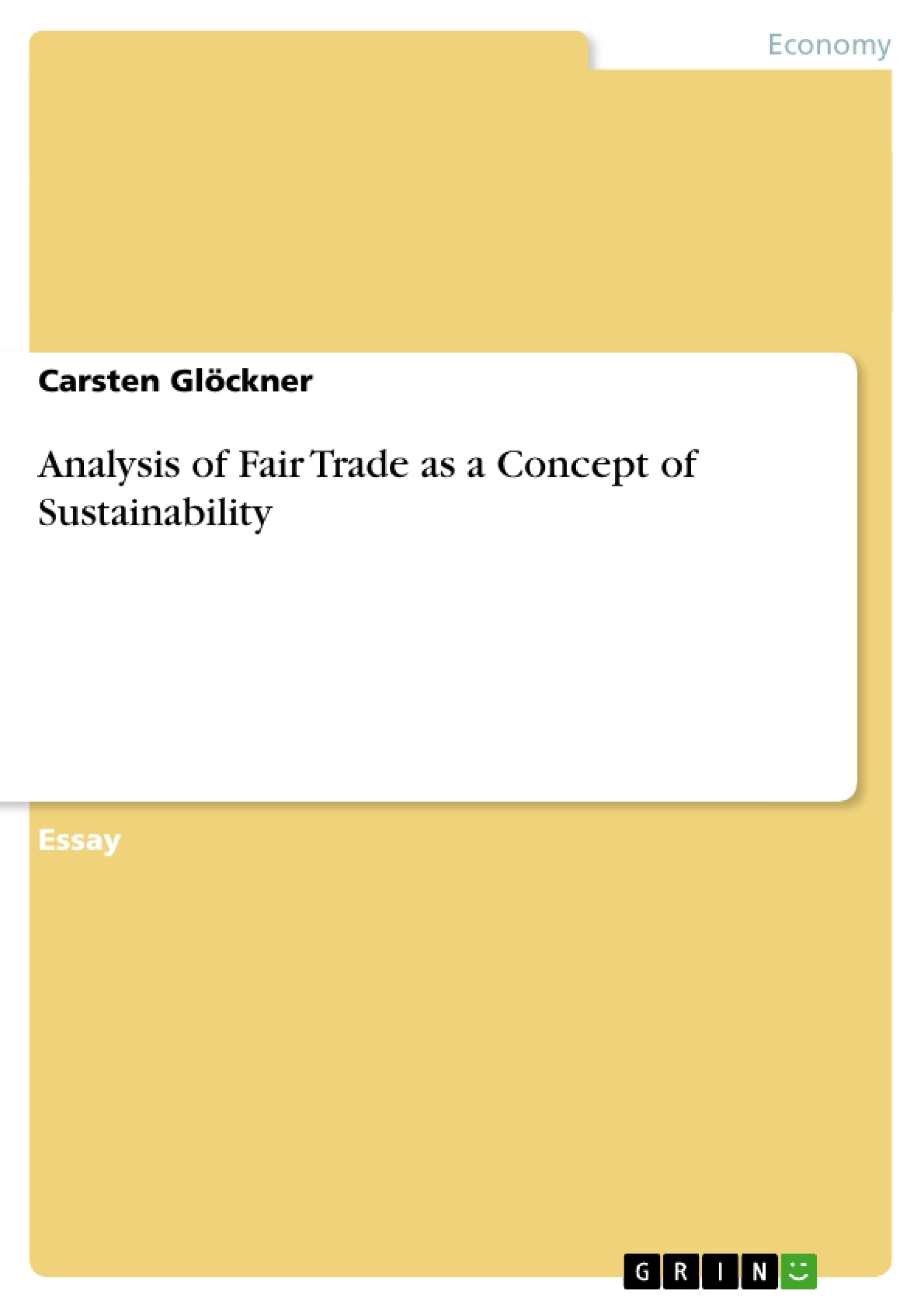In this essay I want to discuss the issue of Fair Trade and how Fair Trade can contribute to social justice. First I will give a short definition what Fair Trade actually is and then I will give an overview about the different Fair Trade organisations and define the standards which they follow. Then I will have a look at the producers and also the products which are available. I will analyse their sales statistic and also their market share.
Fairtrade is a “trading partnership” which tries to maintain “respect, dialogue, transparency, and increased more fairness in international trade” . Fair Trade tries to better the situation of developing countries by paying a “fair” price for certain products that is higher than the market price. In the last few years, Fairtrade has becoming more and more popular in the industrialized world. The supporter’s base is often also engaged in debates with political decision-makers in the European institutions for the purpose of making international trade fairer. Fair Trade is definitely a form of ethical consumption, because as consumption is one aspect of human behaviour that could harm other human beings.
Inhaltsverzeichnis (Table of Contents)
- Introduction
- Definition of Fair Trade
- Fairtrade organisations and standards
- International Fairtrade Organisation (IFAT)
- FLO International
- Labelling
- Criteria of Certification
- Differences and similarities between Bio and Fair Trade
- The Fairtrade Mark TransFair
- International Fairtrade Certification Mark
- Producers
- Products and Sales Channels
- Food and Non-food Products
- Importers and Retailers
- Sales and image campaigns
- Image campaigns
- Fairtrade organisations and standards
- Discussion and critics:
- Price Distortion
- No diversification of Products
- Unfair allocation of the profit margin
- Only a image campaign
- Excursion: Global free trade
- The mercantilist idea
- The liberal conception
- Should we extend free trade?
- Conclusion
- Summary
- Future outlook
Zielsetzung und Themenschwerpunkte (Objectives and Key Themes)
This essay aims to discuss the concept of Fair Trade and its potential contribution to social justice. It explores the definition, standards, and practices of Fair Trade, examining its impact on producers and consumers. The essay also delves into the relationship between Fair Trade and global free trade, analyzing their respective advantages and disadvantages.
- Definition and principles of Fair Trade
- Fairtrade organizations and their standards
- Impact of Fair Trade on producers and consumers
- Comparison of Fair Trade and global free trade
- Potential for Fair Trade expansion and its future outlook
Zusammenfassung der Kapitel (Chapter Summaries)
The introduction provides a background on the situation of developing countries and the role of international trade in their development. It highlights the concept of Fair Trade as a potential solution to address unfair trading practices and promote social justice.
Chapter 2.1 defines Fair Trade as a trading partnership based on dialogue, transparency, and respect, aiming for greater equity in international trade. It emphasizes the role of Fair Trade organizations in supporting producers and advocating for fairer trade practices.
Chapter 2.2 delves into the specific organizations and standards associated with Fair Trade. It discusses the International Fairtrade Organisation (IFAT) and FLO International, outlining their roles in setting standards and certifying producers.
Chapter 2.3 explores the labeling and certification processes within Fair Trade, highlighting the criteria for certification and the differences and similarities between Fair Trade and organic labeling.
Chapter 2.4 examines the role of producers in the Fair Trade system, focusing on their involvement in Fair Trade organizations and the benefits they receive from participating in Fair Trade.
Chapter 2.5 analyzes the products and sales channels associated with Fair Trade, including the types of products offered, the importers and retailers involved, and the market share of Fair Trade products.
Chapter 2.6 discusses the sales and image campaigns employed by Fair Trade organizations to promote their products and raise awareness about Fair Trade principles.
Chapter 3 delves into the criticisms of Fair Trade, addressing concerns about price distortion, lack of product diversification, unfair allocation of profits, and the potential for Fair Trade to be merely an image campaign.
Chapter 3.2 provides an excursion into the concept of global free trade, examining its historical development and the potential advantages and disadvantages of extending free trade globally.
Schlüsselwörter (Keywords)
The keywords and focus themes of the text include Fair Trade, social justice, international trade, developing countries, producers, consumers, Fairtrade organizations, standards, labeling, certification, global free trade, and ethical consumption.
- Quote paper
- Carsten Glöckner (Author), 2009, Analysis of Fair Trade as a Concept of Sustainability, Munich, GRIN Verlag, https://www.grin.com/document/130047
-

-

-

-
Upload your own papers! Earn money and win an iPhone X. -

-
Upload your own papers! Earn money and win an iPhone X. -

-
Upload your own papers! Earn money and win an iPhone X. -

-
Upload your own papers! Earn money and win an iPhone X. -

-
Upload your own papers! Earn money and win an iPhone X. -

-
Upload your own papers! Earn money and win an iPhone X.

